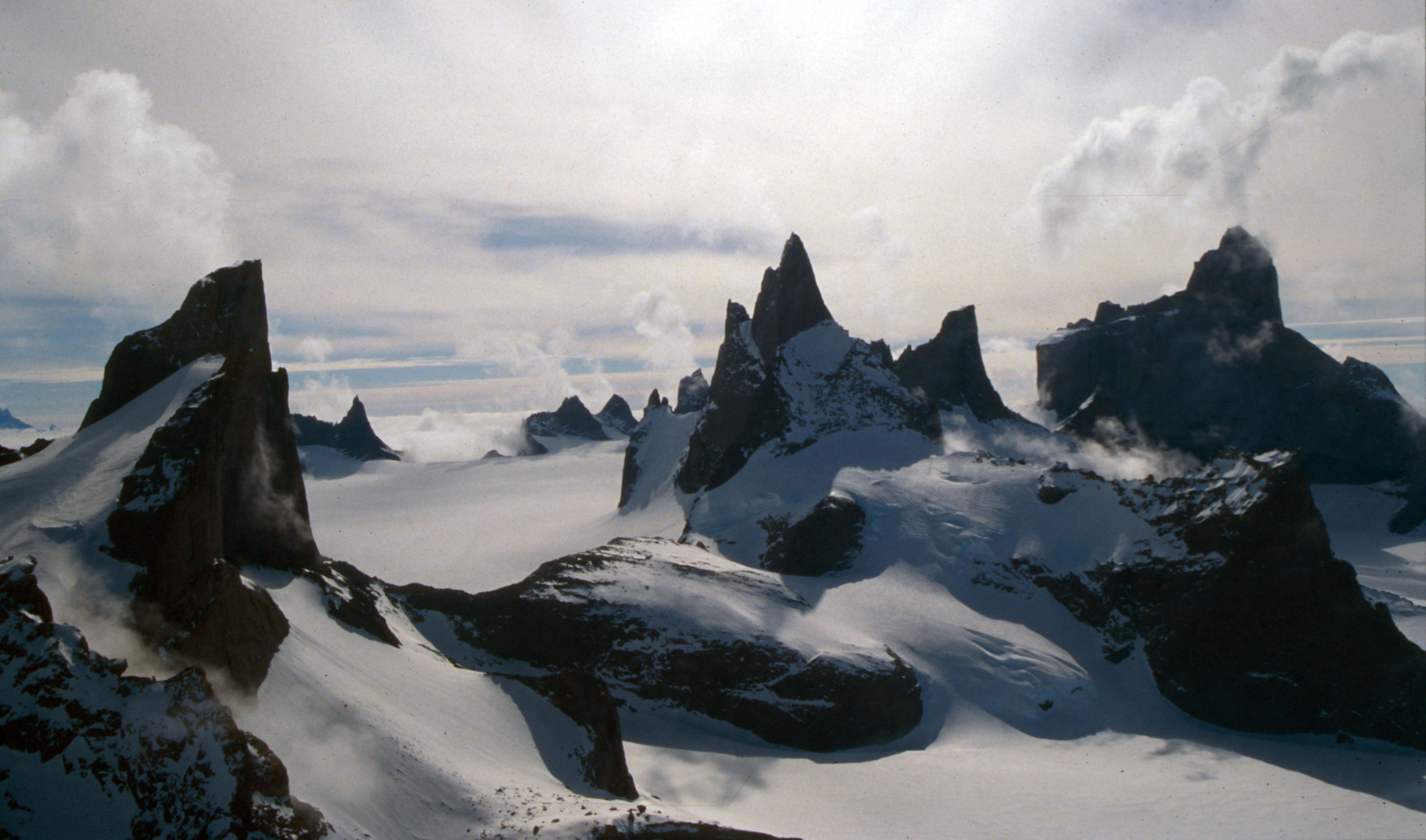|
Ruvungane Peaks
Ruvungane Peaks () is a group of small peaks just north of Ryvingen Peak in the south part of the Borg Massif in Queen Maud Land Queen Maud Land ( no, Dronning Maud Land) is a roughly region of Antarctica claimed by Norway as a dependent territory. It borders the claimed British Antarctic Territory 20° west and the Australian Antarctic Territory 45° east. In addit .... Mapped by Norwegian cartographers from surveys and air photos by Norwegian-British-Swedish Antarctic Expedition (NBSAE) (1949–52) and named Ruvungane. Mountains of Queen Maud Land Princess Martha Coast {{PrincessMarthaCoast-geo-stub ... [...More Info...] [...Related Items...] OR: [Wikipedia] [Google] [Baidu] |
Ryvingen Peak
Ryvingen Peak () is a rock peak 3 nautical miles (6 km) west-southwest of Brapiggen Peak, on the southern side of Borg Massif Borg Massif is a mountain massif, about long and with summits above , situated along the northwest side of the Penck Trough in Queen Maud Land, East Antarctica. The tallest peak, at , is Hogsaetet Mountain. The parallel, ice-filled Raudberg V ... in Queen Maud Land. Mapped by Norwegian cartographers from surveys and air photos by Norwegian-British-Swedish Antarctic Expedition (NBSAE) (1949–52) and named Ryvingen. Mountains of Queen Maud Land Princess Martha Coast {{PrincessMarthaCoast-geo-stub ... [...More Info...] [...Related Items...] OR: [Wikipedia] [Google] [Baidu] |
Borg Massif
Borg Massif is a mountain massif, about long and with summits above , situated along the northwest side of the Penck Trough in Queen Maud Land, East Antarctica. The tallest peak, at , is Hogsaetet Mountain. The parallel, ice-filled Raudberg Valley and Frostlendet Valley trend northeastward through the massif, dividing its summits into three rough groups: Discovery and naming The feature was photographed from the air by the Third German Antarctic Expedition (1938–1939), led by Captain Alfred Ritscher, but was not correctly shown on the maps by the expedition. It was mapped in detail by Norwegian cartographers from surveys and air photos by the Norwegian–British–Swedish Antarctic Expedition (1949–1952), led by John Schjelderup Giæver. It was remapped by air photos taken by the Sixth Norwegian Antarctic Expedition (1958–1959). They named it "Borgmassivet" (the castle massif) in association with Borg Mountain, its most prominent feature. Features *Located at the ... [...More Info...] [...Related Items...] OR: [Wikipedia] [Google] [Baidu] |
Queen Maud Land
Queen Maud Land ( no, Dronning Maud Land) is a roughly region of Antarctica claimed by Norway as a dependent territory. It borders the claimed British Antarctic Territory 20° west and the Australian Antarctic Territory 45° east. In addition, a small unclaimed area from 1939 was annexed in June 2015. Positioned in East Antarctica, it makes out about one-fifth of the continent, and is named after the Norwegian queen Maud of Wales (1869–1938). In 1930, the Norwegian Hjalmar Riiser-Larsen was the first person known to have set foot in the territory. On 14 January 1939, the territory was claimed by Norway. On 23 June 1961, Queen Maud Land became part of the Antarctic Treaty System, making it a demilitarised zone. It is one of two Antarctic claims made by Norway, the other being Peter I Island. They are administered by the Polar Affairs Department of the Norwegian Ministry of Justice and Public Security in Oslo. Most of the territory is covered by the east Antarctic ic ... [...More Info...] [...Related Items...] OR: [Wikipedia] [Google] [Baidu] |
Mountains Of Queen Maud Land
A mountain is an elevated portion of the Earth's crust, generally with steep sides that show significant exposed bedrock. Although definitions vary, a mountain may differ from a plateau in having a limited summit area, and is usually higher than a hill, typically rising at least 300 metres (1,000 feet) above the surrounding land. A few mountains are isolated summits, but most occur in mountain ranges. Mountains are formed through tectonic forces, erosion, or volcanism, which act on time scales of up to tens of millions of years. Once mountain building ceases, mountains are slowly leveled through the action of weathering, through slumping and other forms of mass wasting, as well as through erosion by rivers and glaciers. High elevations on mountains produce colder climates than at sea level at similar latitude. These colder climates strongly affect the ecosystems of mountains: different elevations have different plants and animals. Because of the less hospitable terrain and ... [...More Info...] [...Related Items...] OR: [Wikipedia] [Google] [Baidu] |

